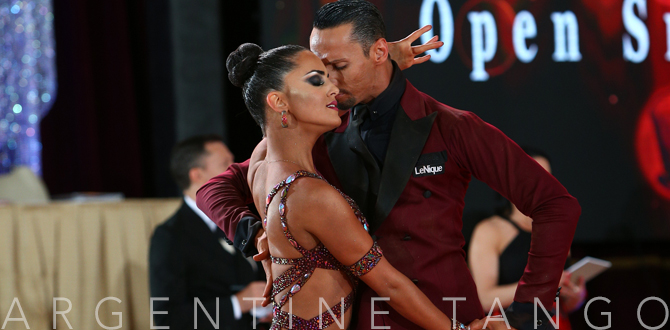Sharp. Passionate. Bold. The Argentine Tango has inspired people for over 100 years. It’s a smooth and complex dance that tells the story of cultural history through emotional expression. Known for its intricate footwork and close embrace, the Argentine Tango has captivated hearts and minds around the world.
But where did the Argentine Tango come from, and how did it develop? Here’s the history of the Argentine Tango, from its beginnings to today.
For expert dance lessons in Carmel, you can count on us. Schedule dance lessons at Fred Astaire Dance Studios today.
Where Did the Argentine Tango Originate From?
The outskirts of Buenos Aires, Argentina, is the birthplace of the Argentine Tango. This area, known as the conventillos, housed a diverse population, including African descendants, European immigrants, and Indigenous people.
From this cultural mix, came the Argentine Tango in the 1880s. The Tango is a blend of African candombe rhythms, European folk music, and the local culture of Buenos Aires.
The African influence is in the candombe rhythms, with their percussive base. European immigrants, especially Italians and Spaniards, brought in melodies and instruments, adding a lyrical layer to the Tango. This blend created a new musical and dance form that found an audience with the lower classes and marginalized groups in Buenos Aires.
Initially, the Tango was associated with the lower classes and often looked down upon by society’s elite. It was danced in bars, brothels, and street corners — places frequented by those on the fringes of society. However, like many trends, as the Tango’s popularity grew, it began to move past social boundaries, gradually gaining acceptance across different social classes.
Evolution of the Argentine Tango & Its Rise in Popularity
The Argentine Tango’s journey from Buenos Aires to the rest of the world began in the early 1900s. As Argentine sailors and immigrants traveled, they brought the Tango with them.
The dance quickly captivated audiences in Europe, especially in Paris and London, where it became a craze. Its sensual and dramatic style interested many people, although it also faced backlash from moral authorities who found it too provocative.
The Golden Age of Tango, from the 1930s to the 1950s, was a period of immense growth for the dance. During this time, legendary orchestras and singers, like Carlos Gardel and Juan D’Arienzo, emerged, creating timeless Tango music that remains popular today. The dance itself became more structured, with specific styles and techniques becoming standard.
The Tango experienced a decline in popularity from the 1950s to the 1980s. Despite this, its roots remained strong in Buenos Aires, where dedicated dancers and musicians kept the tradition alive. Thankfully, this period of decline was temporary, setting the stage for a revival.
How the Argentine Tango Is Danced Today
The 1980s marked the beginning of a Tango Renaissance, with a renewed global interest in the dance. New generations of dancers and teachers developed, spreading the Tango’s beauty to an even wider audience.
Today, the Tango is celebrated worldwide, with major annual festivals and competitions. Modern Tango has evolved to include influences from various musical genres, leading to innovations like electro tango, which combines traditional Tango with electronic music.
Buenos Aires remains a hub for Tango tourism, where enthusiasts from around the globe visit to experience its authentic charm. The city’s vibrant Tango scene includes milongas (dance halls), performances, and lessons.
Tango’s influence extends beyond dance and music. It has inspired fashion, art, and literature, cementing its place as an enduring cultural symbol. For many people, the Argentine Tango is a living, breathing expression of Argentina’s cultural heritage.
Argentine Tango Lessons at Fred Astaire Dance Studios
The journey of the Argentine Tango from the streets of Buenos Aires to the global stage is proof of its powerful cultural impact. Recognized as an intangible cultural heritage by UNESCO, the Tango continues to inspire and captivate.
At Fred Astaire Dance Studios, we celebrate the rich history and vibrant modernity of the Argentine Tango.
Whether you’re a beginner or an experienced dancer, our professional and friendly instructors are here to guide you through the passionate world of Tango. Join us to experience the magic of this timeless dance.
Ready to learn the Argentine Tango? Schedule dance lessons with Fred Astaire Dance Studios today.


